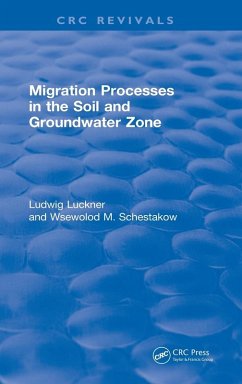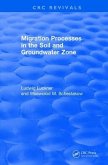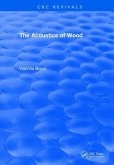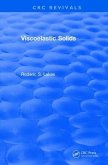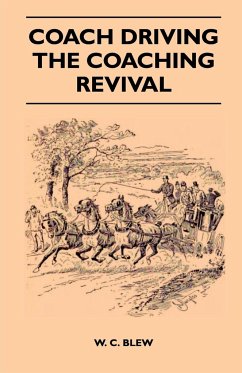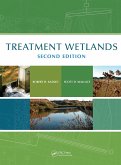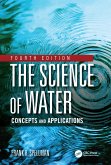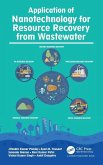- Gebundenes Buch
- Merkliste
- Auf die Merkliste
- Bewerten Bewerten
- Teilen
- Produkt teilen
- Produkterinnerung
- Produkterinnerung
This comprehensive work integrates knowledge from physics, chemistry, biology, mathematics, geology, engineering, and several other fields. Its purpose is to provide solution methods, techniques of parameter estimation, and tools for solving the complex problems of mathematical modeling
Andere Kunden interessierten sich auch für
![Revival Revival]() Ludwig LucknerRevival114,99 €
Ludwig LucknerRevival114,99 €![Revival Revival]() Voichita BucurRevival262,99 €
Voichita BucurRevival262,99 €![Revival Revival]() Roderic S. LakesRevival105,99 €
Roderic S. LakesRevival105,99 €![Coach Driving - The Coaching Revival Coach Driving - The Coaching Revival]() W. C. BlewCoach Driving - The Coaching Revival19,99 €
W. C. BlewCoach Driving - The Coaching Revival19,99 €![Treatment Wetlands Treatment Wetlands]() Robert H. KadlecTreatment Wetlands252,99 €
Robert H. KadlecTreatment Wetlands252,99 €![The Science of Water The Science of Water]() Frank R. SpellmanThe Science of Water92,99 €
Frank R. SpellmanThe Science of Water92,99 €![Application of Nanotechnology for Resource Recovery from Wastewater Application of Nanotechnology for Resource Recovery from Wastewater]() Application of Nanotechnology for Resource Recovery from Wastewater244,99 €
Application of Nanotechnology for Resource Recovery from Wastewater244,99 €-
-
-
This comprehensive work integrates knowledge from physics, chemistry, biology, mathematics, geology, engineering, and several other fields. Its purpose is to provide solution methods, techniques of parameter estimation, and tools for solving the complex problems of mathematical modeling
Hinweis: Dieser Artikel kann nur an eine deutsche Lieferadresse ausgeliefert werden.
Hinweis: Dieser Artikel kann nur an eine deutsche Lieferadresse ausgeliefert werden.
Produktdetails
- Produktdetails
- Verlag: CRC Press
- Seitenzahl: 504
- Erscheinungstermin: 28. September 2017
- Englisch
- Abmessung: 240mm x 161mm x 31mm
- Gewicht: 916g
- ISBN-13: 9781138106079
- ISBN-10: 1138106070
- Artikelnr.: 50497725
- Herstellerkennzeichnung
- Libri GmbH
- Europaallee 1
- 36244 Bad Hersfeld
- gpsr@libri.de
- Verlag: CRC Press
- Seitenzahl: 504
- Erscheinungstermin: 28. September 2017
- Englisch
- Abmessung: 240mm x 161mm x 31mm
- Gewicht: 916g
- ISBN-13: 9781138106079
- ISBN-10: 1138106070
- Artikelnr.: 50497725
- Herstellerkennzeichnung
- Libri GmbH
- Europaallee 1
- 36244 Bad Hersfeld
- gpsr@libri.de
Ludwig Luckner
METHODS OF MATHEMATICAL MODELLING. MODEL CONCEPTS FOR AIR, WATER, AND
SOLIDS. Characterization of Multi-Component Systems. Mixphase Model of Air.
Mixphase Model of Water. Mixphase Model of the Rock Matrix. SUBSURFACE
MODEL CONCEPT. Scale of Observation. The "Mobile/Immobile" Two-Phase Model
Approach. Multi-Fluid Immiscible Flow Model Approach. Concepts for Limiting
Cases of Fluid Distribution and Flow. MASS TRANSPORT IN THE SUBSURFACE.
Molecular Diffusion. Convection and Hydrodynamic Dispersion. Scale Problems
of Hydrodynamic Dispersion. Applicability of the Hydrodynamic Dispersion
Model Approach. PHASE INTERNAL CONVERSION PROCESSES. Fundamentals of
Chemical Thermodynamics. Association and Dissociation of Particles in
Solution. Acid-Base Reaction Processes. Oxidation-Reduction Processes.
PHASE EXCHANGE. Dynamics of Exchange Processes. Exchange Processes.
Dissolution and Precipitation Processes. Biological Metabolism of Migrants.
Ecological Fundamentals. The Subsurface as a Living Space. Biogenic
Substance and Energy Conversion. STORAGE PROCESS MODELS. HEAT MIGRATION.
Heat Transport in the Subsurface. Phase Exchange, Storage, and
Transformation Processes. MATHEMATICAL DESCRIPTION OF THE TOTAL MIGRATION
PROCESS. Process Assessment. Methodological Examples. Heat Migration in the
Vadose Subsurface. Migration of Oxygen in the Aerated Subsurface.
Deionization of Water in the Subsurface. Initial and Boundary Conditions.
REFERENCES. SOLUTION METHODS. ANALYTICAL SOLUTION METHODS. Review of
Important Solution Methods. Solution of Convective Models. Solution of
Diffusive/Dispersive Models. Solution of Dispersive-Convective Models.
Computation of Analytical Solutions. NUMERICAL SOLUTION METHODS.
Fundamentals of Building Discrete Migration Models. Formulation of
Space-Discrete Mathematical Models. Formation of Time-Discrete Mathematical
Models. Algorithms for One-and Quasi-One-Dimensional Migration Processes.
Efficient Algorithms for Two-Dimensional Migration Processes. PARAMETER
ESTIMATION. Fundamental Approach and Algorithm. Examples Using the
"Straight-Line Method". Examples Using the "Type Curve Method". Example of
Optimization with Objective Functions. REFERENCES. TECHNIQUES OF PARAMETER
ESTIMATION. SAMPLING TECHNIQUE. Sampling Subsurface Solids. Collection of
Soil-Water and Groundwater Samples. Soil-Air Sampling. TECHNIQUES FOR
SAMPLE ANALYSIS. Analysis of Water and Air Samples. Migration Tests in
Laboratories. Value of Parameters Determined from Samples. FIELD TEST
METHODS. Geophysical Test Methods. Tests in the Natural Groundwater Flow.
Pumping and Injection Tracer Tests. Seepage Tests. Value of Parameters
Determined by Field Test Methods. MIGRATION PROCESS OBSERVATION AND
INTERPRETATION. Monitoring Environmental Migrants. Monitoring of Migration
Processes. REFERENCES.
SOLIDS. Characterization of Multi-Component Systems. Mixphase Model of Air.
Mixphase Model of Water. Mixphase Model of the Rock Matrix. SUBSURFACE
MODEL CONCEPT. Scale of Observation. The "Mobile/Immobile" Two-Phase Model
Approach. Multi-Fluid Immiscible Flow Model Approach. Concepts for Limiting
Cases of Fluid Distribution and Flow. MASS TRANSPORT IN THE SUBSURFACE.
Molecular Diffusion. Convection and Hydrodynamic Dispersion. Scale Problems
of Hydrodynamic Dispersion. Applicability of the Hydrodynamic Dispersion
Model Approach. PHASE INTERNAL CONVERSION PROCESSES. Fundamentals of
Chemical Thermodynamics. Association and Dissociation of Particles in
Solution. Acid-Base Reaction Processes. Oxidation-Reduction Processes.
PHASE EXCHANGE. Dynamics of Exchange Processes. Exchange Processes.
Dissolution and Precipitation Processes. Biological Metabolism of Migrants.
Ecological Fundamentals. The Subsurface as a Living Space. Biogenic
Substance and Energy Conversion. STORAGE PROCESS MODELS. HEAT MIGRATION.
Heat Transport in the Subsurface. Phase Exchange, Storage, and
Transformation Processes. MATHEMATICAL DESCRIPTION OF THE TOTAL MIGRATION
PROCESS. Process Assessment. Methodological Examples. Heat Migration in the
Vadose Subsurface. Migration of Oxygen in the Aerated Subsurface.
Deionization of Water in the Subsurface. Initial and Boundary Conditions.
REFERENCES. SOLUTION METHODS. ANALYTICAL SOLUTION METHODS. Review of
Important Solution Methods. Solution of Convective Models. Solution of
Diffusive/Dispersive Models. Solution of Dispersive-Convective Models.
Computation of Analytical Solutions. NUMERICAL SOLUTION METHODS.
Fundamentals of Building Discrete Migration Models. Formulation of
Space-Discrete Mathematical Models. Formation of Time-Discrete Mathematical
Models. Algorithms for One-and Quasi-One-Dimensional Migration Processes.
Efficient Algorithms for Two-Dimensional Migration Processes. PARAMETER
ESTIMATION. Fundamental Approach and Algorithm. Examples Using the
"Straight-Line Method". Examples Using the "Type Curve Method". Example of
Optimization with Objective Functions. REFERENCES. TECHNIQUES OF PARAMETER
ESTIMATION. SAMPLING TECHNIQUE. Sampling Subsurface Solids. Collection of
Soil-Water and Groundwater Samples. Soil-Air Sampling. TECHNIQUES FOR
SAMPLE ANALYSIS. Analysis of Water and Air Samples. Migration Tests in
Laboratories. Value of Parameters Determined from Samples. FIELD TEST
METHODS. Geophysical Test Methods. Tests in the Natural Groundwater Flow.
Pumping and Injection Tracer Tests. Seepage Tests. Value of Parameters
Determined by Field Test Methods. MIGRATION PROCESS OBSERVATION AND
INTERPRETATION. Monitoring Environmental Migrants. Monitoring of Migration
Processes. REFERENCES.
METHODS OF MATHEMATICAL MODELLING. MODEL CONCEPTS FOR AIR, WATER, AND
SOLIDS. Characterization of Multi-Component Systems. Mixphase Model of Air.
Mixphase Model of Water. Mixphase Model of the Rock Matrix. SUBSURFACE
MODEL CONCEPT. Scale of Observation. The "Mobile/Immobile" Two-Phase Model
Approach. Multi-Fluid Immiscible Flow Model Approach. Concepts for Limiting
Cases of Fluid Distribution and Flow. MASS TRANSPORT IN THE SUBSURFACE.
Molecular Diffusion. Convection and Hydrodynamic Dispersion. Scale Problems
of Hydrodynamic Dispersion. Applicability of the Hydrodynamic Dispersion
Model Approach. PHASE INTERNAL CONVERSION PROCESSES. Fundamentals of
Chemical Thermodynamics. Association and Dissociation of Particles in
Solution. Acid-Base Reaction Processes. Oxidation-Reduction Processes.
PHASE EXCHANGE. Dynamics of Exchange Processes. Exchange Processes.
Dissolution and Precipitation Processes. Biological Metabolism of Migrants.
Ecological Fundamentals. The Subsurface as a Living Space. Biogenic
Substance and Energy Conversion. STORAGE PROCESS MODELS. HEAT MIGRATION.
Heat Transport in the Subsurface. Phase Exchange, Storage, and
Transformation Processes. MATHEMATICAL DESCRIPTION OF THE TOTAL MIGRATION
PROCESS. Process Assessment. Methodological Examples. Heat Migration in the
Vadose Subsurface. Migration of Oxygen in the Aerated Subsurface.
Deionization of Water in the Subsurface. Initial and Boundary Conditions.
REFERENCES. SOLUTION METHODS. ANALYTICAL SOLUTION METHODS. Review of
Important Solution Methods. Solution of Convective Models. Solution of
Diffusive/Dispersive Models. Solution of Dispersive-Convective Models.
Computation of Analytical Solutions. NUMERICAL SOLUTION METHODS.
Fundamentals of Building Discrete Migration Models. Formulation of
Space-Discrete Mathematical Models. Formation of Time-Discrete Mathematical
Models. Algorithms for One-and Quasi-One-Dimensional Migration Processes.
Efficient Algorithms for Two-Dimensional Migration Processes. PARAMETER
ESTIMATION. Fundamental Approach and Algorithm. Examples Using the
"Straight-Line Method". Examples Using the "Type Curve Method". Example of
Optimization with Objective Functions. REFERENCES. TECHNIQUES OF PARAMETER
ESTIMATION. SAMPLING TECHNIQUE. Sampling Subsurface Solids. Collection of
Soil-Water and Groundwater Samples. Soil-Air Sampling. TECHNIQUES FOR
SAMPLE ANALYSIS. Analysis of Water and Air Samples. Migration Tests in
Laboratories. Value of Parameters Determined from Samples. FIELD TEST
METHODS. Geophysical Test Methods. Tests in the Natural Groundwater Flow.
Pumping and Injection Tracer Tests. Seepage Tests. Value of Parameters
Determined by Field Test Methods. MIGRATION PROCESS OBSERVATION AND
INTERPRETATION. Monitoring Environmental Migrants. Monitoring of Migration
Processes. REFERENCES.
SOLIDS. Characterization of Multi-Component Systems. Mixphase Model of Air.
Mixphase Model of Water. Mixphase Model of the Rock Matrix. SUBSURFACE
MODEL CONCEPT. Scale of Observation. The "Mobile/Immobile" Two-Phase Model
Approach. Multi-Fluid Immiscible Flow Model Approach. Concepts for Limiting
Cases of Fluid Distribution and Flow. MASS TRANSPORT IN THE SUBSURFACE.
Molecular Diffusion. Convection and Hydrodynamic Dispersion. Scale Problems
of Hydrodynamic Dispersion. Applicability of the Hydrodynamic Dispersion
Model Approach. PHASE INTERNAL CONVERSION PROCESSES. Fundamentals of
Chemical Thermodynamics. Association and Dissociation of Particles in
Solution. Acid-Base Reaction Processes. Oxidation-Reduction Processes.
PHASE EXCHANGE. Dynamics of Exchange Processes. Exchange Processes.
Dissolution and Precipitation Processes. Biological Metabolism of Migrants.
Ecological Fundamentals. The Subsurface as a Living Space. Biogenic
Substance and Energy Conversion. STORAGE PROCESS MODELS. HEAT MIGRATION.
Heat Transport in the Subsurface. Phase Exchange, Storage, and
Transformation Processes. MATHEMATICAL DESCRIPTION OF THE TOTAL MIGRATION
PROCESS. Process Assessment. Methodological Examples. Heat Migration in the
Vadose Subsurface. Migration of Oxygen in the Aerated Subsurface.
Deionization of Water in the Subsurface. Initial and Boundary Conditions.
REFERENCES. SOLUTION METHODS. ANALYTICAL SOLUTION METHODS. Review of
Important Solution Methods. Solution of Convective Models. Solution of
Diffusive/Dispersive Models. Solution of Dispersive-Convective Models.
Computation of Analytical Solutions. NUMERICAL SOLUTION METHODS.
Fundamentals of Building Discrete Migration Models. Formulation of
Space-Discrete Mathematical Models. Formation of Time-Discrete Mathematical
Models. Algorithms for One-and Quasi-One-Dimensional Migration Processes.
Efficient Algorithms for Two-Dimensional Migration Processes. PARAMETER
ESTIMATION. Fundamental Approach and Algorithm. Examples Using the
"Straight-Line Method". Examples Using the "Type Curve Method". Example of
Optimization with Objective Functions. REFERENCES. TECHNIQUES OF PARAMETER
ESTIMATION. SAMPLING TECHNIQUE. Sampling Subsurface Solids. Collection of
Soil-Water and Groundwater Samples. Soil-Air Sampling. TECHNIQUES FOR
SAMPLE ANALYSIS. Analysis of Water and Air Samples. Migration Tests in
Laboratories. Value of Parameters Determined from Samples. FIELD TEST
METHODS. Geophysical Test Methods. Tests in the Natural Groundwater Flow.
Pumping and Injection Tracer Tests. Seepage Tests. Value of Parameters
Determined by Field Test Methods. MIGRATION PROCESS OBSERVATION AND
INTERPRETATION. Monitoring Environmental Migrants. Monitoring of Migration
Processes. REFERENCES.

